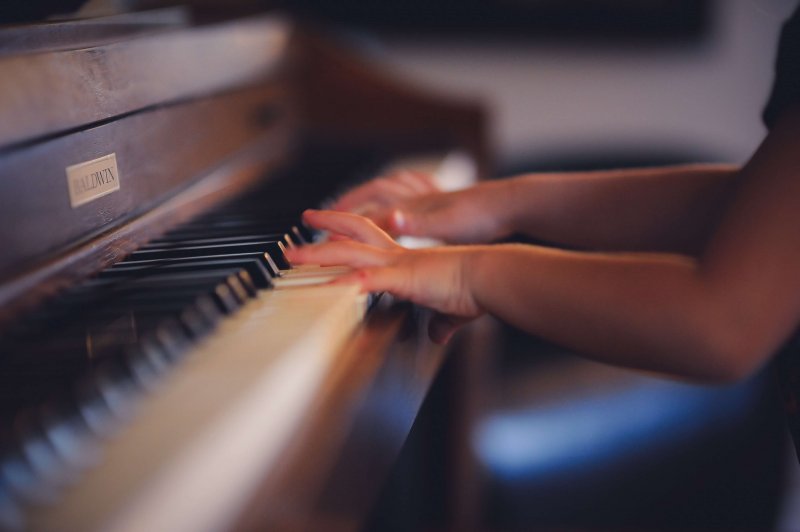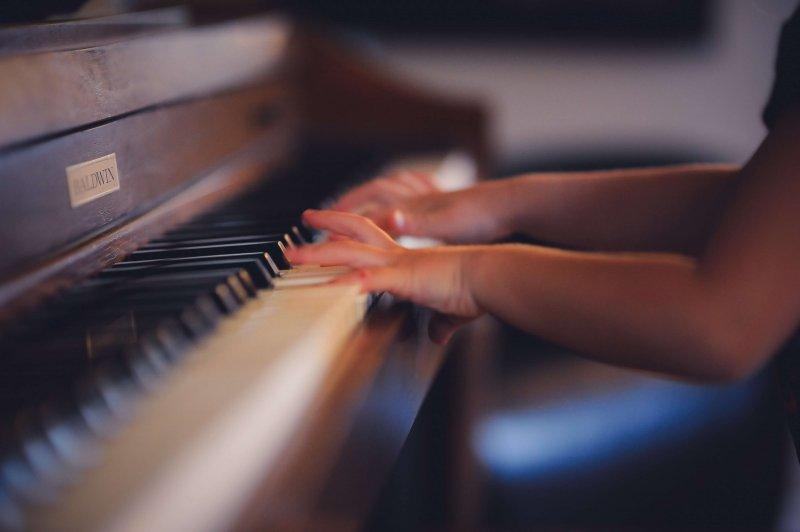 As a beginner learning to play the piano, you might feel overwhelmed by all of the new information — major scales, minor scales, and triads, oh my! How do you remember it all? Start with piano major scales by using these 3 easy tricks from St. Augustine, FL piano teacher Heather L...
As a beginner learning to play the piano, you might feel overwhelmed by all of the new information — major scales, minor scales, and triads, oh my! How do you remember it all? Start with piano major scales by using these 3 easy tricks from St. Augustine, FL piano teacher Heather L...
Are you wondering how to learn piano scales fast? It can be tough to see which keys belong in that specific order. (“Where’s the black key, again?”) When you can visualize piano scales, it’s easier to learn and remember them. Keep reading to learn everything you need to know!
You may also be interested in: Piano Keyboard Layout: A Helpful Guide for Beginners
What is the Best Way to Learn Piano Major Scales?
You can learn your piano scales by regularly practicing and setting yourself up to be able to visualize the scales. To do this, you can use a few simple tricks:
- Use colored objects on the keys.
- Remember where your neighbors (other scales) live.
- Highlight the keys.
Let’s take a look at how you can do each of these!
1. Use Colored Objects on the Keys
This terrific blog entry from The Teaching Studio highlights some great ways to have fun and learn a lot about piano major scales. One way is to take little colored fuzz balls that you can get at any craft or dollar store. Use a different color for every key, place the balls on the correct keys first before playing the scale. If you need help remembering at home, you can check out the free printables Jenny offers, including fun piano games and exercises.
2. Remember Where Your “Neighbors” Live
Pictured above is an illustration from Emily Clark Music of a keyboard and a description of a major scale. If you’re wondering how to learn scales on piano, this idea is for you to be able to start anywhere on the piano and build your scale, key by key. For example, begin on an E flat. Every scale is made up of both whole steps and half steps (also referred to as “tones” and “semitones”), and major scales have their own order. It goes like this:
whole – whole – half – whole – whole – whole – half
This means that, beginning on E flat, you would play:
E flat – F – G – A flat – B flat – C – D – E flat
Remember, a half step is when two keys are neighbors. There’s no other key between them. A whole step is when two keys have one other key between them.
Another way to think of this is to remember that in piano major scales, there’s always a half step between scale degrees three and four and between seven and eight. The only neighbors are between the third and fourth keys and the seventh and eighth keys.
3. Highlight the Keys
Over time, you’ll begin to see and “highlight” the keys of each scale, as if they’re lit up from the inside. Until then, there’s a really neat tool from pianotools.com that you can use to highlight the keys for you! Just enter the name of the scale that you’d like to see, and the tool will color the correct keys of that scale for you to see. It’s a great reference for those days when you’re just stumped.
Good Luck Learning Piano Major Scales!
We hope these tricks have helped you understand how to learn scales on piano. The best part is how easy it is to implement one or all of these.
If you’re still having a difficult time visualizing the scales on the keyboard, then you might not be a visual learner. And, that’s okay! Some people are, while others learn best through sound and words or through motion and muscle memory.
Talk with your school music instructor or your piano teacher about it. He or she can help you find out which kind of learner you are and provide the most suitable advice. Then, you’ll be able to set yourself up for success by finding different ways to learn piano skills.
Looking for a piano teacher in your area? Start your search here!
 Heather L. teaches singing, piano, acting, and more in St. Augustine, FL, as well as through online lessons. She is a graduate of the prestigious Westminster Choir College in Princeton, New Jersey, and has performed with the New York and Royal Philharmonics, the New Jersey and Virginia Symphonies, the American Boy Choir, and the internationally renowned opera star Andrea Bocelli. Learn more about Heather here!
Heather L. teaches singing, piano, acting, and more in St. Augustine, FL, as well as through online lessons. She is a graduate of the prestigious Westminster Choir College in Princeton, New Jersey, and has performed with the New York and Royal Philharmonics, the New Jersey and Virginia Symphonies, the American Boy Choir, and the internationally renowned opera star Andrea Bocelli. Learn more about Heather here!
Photo by Celeste
Suzy S.

